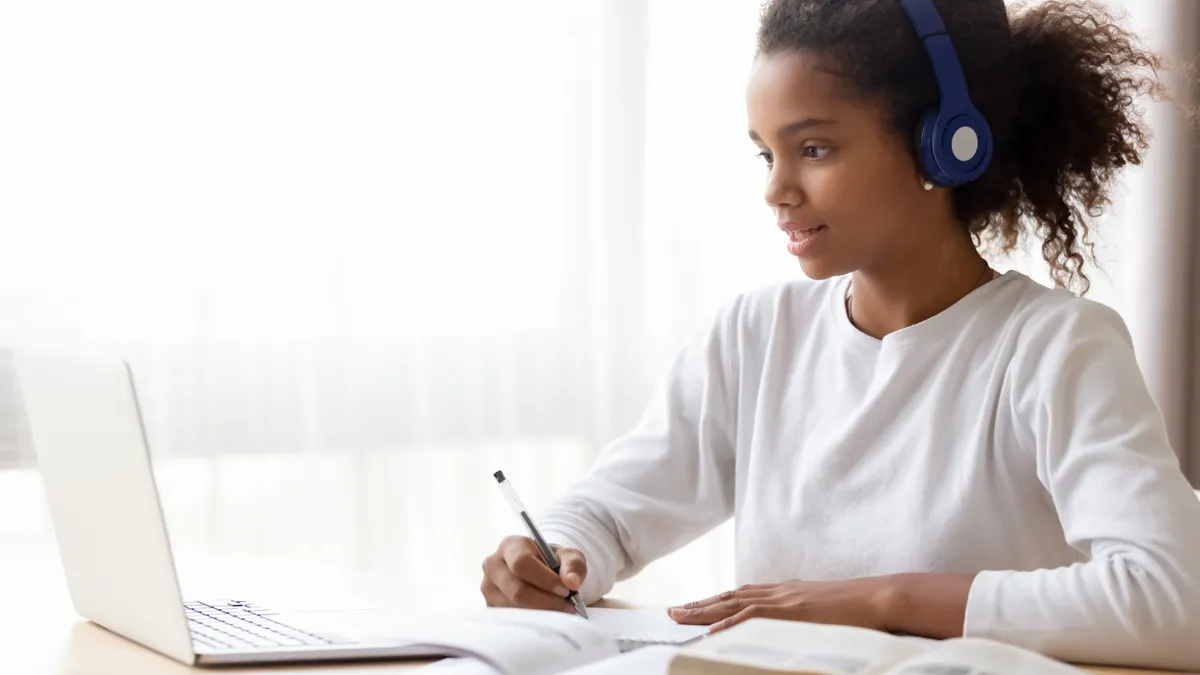Dive Brief:
-
Middle and high school students gave high marks to their teachers for supporting their learning during the pandemic but said they crave more one-to-one interaction with educators, according to a national survey commissioned jointly by the National Education Association and the National Parent Teacher Association.
-
While some students reported a preference for online learning because of the reduced social pressures and flexibilities with learning at home, only 32% of respondents said they were doing well academically now compared to 58% who reported having strong academic performance before the pandemic. The self-reported academic declines were consistent among different racial subgroups, although younger students and students whose parents did not attend college were more likely to report academic dips.
-
PTA and NEA representatives said while they were pleased to learn about students’ resilience during this difficult time, they urged schools to increase family engagement and develop more educational supports for students without overburdening teachers. “We're talking about collaborating with educators in a way that they restructure a day, so that they can provide … the kind of things that the students are asking for,” NEA President Becky Pringle said during a Wednesday media call.
Dive Insight:
In perhaps a model of collaboration between parents and school systems, Pringle and National PTA President Leslie Boggs took turns sharing their reactions to the student survey results, as well as offering joint recommendations that may address the struggles students are having.
“I think that's really why it's so important that we see that the family-school partnership, that family engagement is going to be so vital for student success,” Boggs said. “It's vital now but it's going to be even more so in the future.”
Among recommendations the groups offered:
-
Provide students with more instructional and social-emotional supports. The survey found 56% of students said they and their families were “doing OK,” but 16% said they were struggling. Their challenges included economic stress, illnesses in their families, boredom and social isolation.
Additionally, 65% of students who said they had been doing well academically pre-pandemic but are now struggling suggested it would be helpful to have more interactions with their teachers.
Recommendations from Boggs and Pringle, as well as in a report about the findings, included tutoring and office hours with teachers, paraprofessionals, counselors and school staff. Adding supports for students’ and educators’ mental well-being was also encouraged. -
Don’t back down from high standards. Do prioritize essential coursework. A majority of students — 76% — said they are getting a good education this year while recognizing the challenges teachers have acclimating to virtual learning formats and socially distanced in-person classrooms. Adjusting assignments and lesson plans to focus on standards-based skills needed for class advancement can help streamline learning and make both in-person and virtual learning manageable, the groups recommended.
-
Build up a sense of community even when separated physically. If given a choice, 48% of students learning online full-time prefer online learning, while 56% of students learning in person prefer face-to-face instruction.
Regardless of the learning mode students are in, school communities should establish routines and relationships to help students and staff feel safe, connected and emotionally supported, the groups advised.
“I know exactly the kind of obstacles this pandemic has created for students,” Pringle said. “This is doubly true for students from Black, brown and Native communities, or those who live in poverty or rural or isolated towns. It will take educators, families and communities coming together to undo the damage this pandemic has brought on students, and communities.”
The poll, which surveyed more than 1,300 students aged 13–18, was conducted through Greenberg Quinlan Rosner Research.













